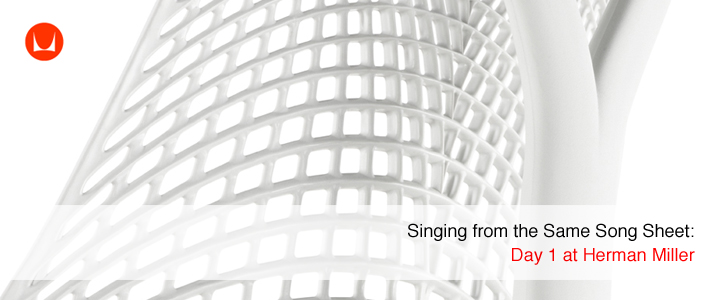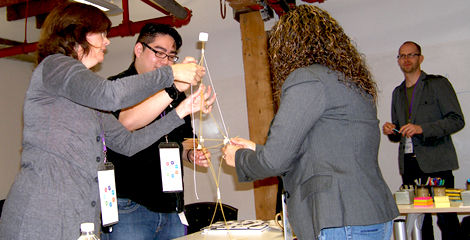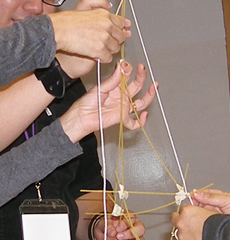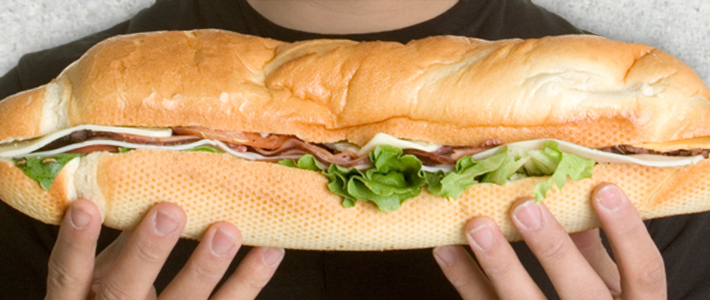
I have been a fan of the furniture design and manufacturing company Herman Miller since my college days at OCA (now OCAD), where I studied Industrial Design. Rebecca used to call on Herman Miller when she managed the marketing for engineered plastics at Geon Vinyl (they were one of her customers). She was always coming home with glowing reports of her visits there and just how progressive she found the people.
With this background, you can appreciate how thrilled Rebecca and I were to be invited to visit the headquarters of Herman Miller May 31/June 1.
Organized jointly by Herman Miller and their distributor, Prestige Business Interiors of Waterloo, on Thursday the 31st, we joined 12 other local design, facility and community oriented folks at 6:30 am for a 6 hour chartered bus ride to Holland, Michigan and Herman Miller’s Design Centre.
On arrival, the first order of business was café lattes all around at the company’s coffee bar (as good as you’ll get anywhere). Then we were given a brief tour. We stood around the kitchen area during a visit with the President of the company. Then, we had an orientation in a living-room-like setting. This was followed by lunch in their meeting room, a delicious meal prepared in their own kitchens. The overall impression throughout the afternoon was that you were very welcome and special guests in someone’s home.
We toured the office area next and experienced a very open and casual working environment with lots of natural light from windows and numerous skylights. Little meeting areas and nooks are found everywhere. The coffee/lunch bar stands in the middle of the office with no walls around it; this creates lots of occasions to interact and run into people.
The last tour of the day was to the furniture design lab where we experienced a glimpse into the future of office environments. As the head of design, development and research explained, since people are now able to work virtually anywhere, successful office environments of the future will need to be more inviting and enjoyable; that’s the focus of Herman Miller’s designers. I was particularly impressed at the designers’ efforts to create furniture that minimizes environmental impact in manufacture and at end-of-life recycling. For example, I’m not allowed to tell you how many dollars they have spent to create a comfortable yet environmentally friendly chair back- just one component! We could happily retire on the money they have spent on just the effort to make this back more easily recyclable.
Our evening was spent being wined and dined at Herman Miller’s own spectacular Marigold Lodge that will accommodate 30+ people in sumptuous comfort, right on the shores of Lake Michigan. No complaints here.




